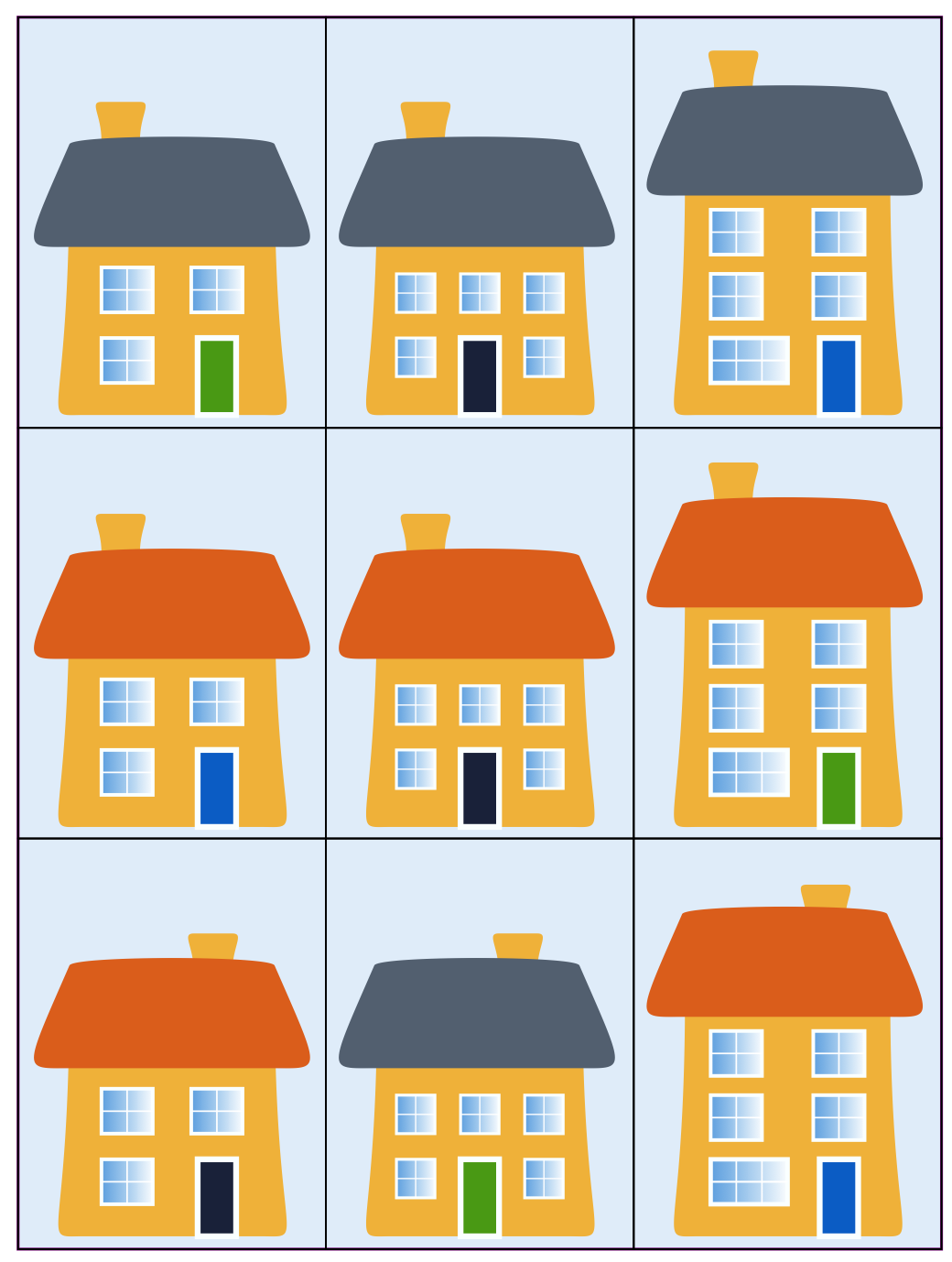Copyright © University of Cambridge. All rights reserved.
'Sort the Street' printed from https://nrich.maths.org/
Show menu
Why do this problem?
This low threshold high ceiling problem is ideal for children to work on in pairs or small groups as this will encourage them to talk about what they are doing, which is a great assessment opportunity for you. Its open-ended nature is a reason in itself to try it in the classroom. Some pupils may surprise you with their inventiveness! The task encourages learners to identify what is the same and what is different as they compare the images. Being able to articulate sameness and difference is a key mathematical skill.
Possible approach
This problem featured in the NRICH Primary and Secondary webinar in September 2022.
To introduce the problem, invite the children to chat in pairs about what they notice about the houses. Then, sort the houses according to a particular criterion using the interactivity and invite the class to work out how they have been sorted. This will help them to grasp the focus.
Key questions
What is the same about these houses? Are there any others like that?
Why have you grouped the houses in this way?
Possible extension
Some children will enjoy the challenge of finding two or more criteria which fit some houses, perhaps also extending to more than two groups. For example, rather than just "these houses have five windows" and "these houses don't have five windows", some might say "these houses have five windows and are tall"; "these houses have five wondows but aren't tall/are short" and "these houses don't have five windows".
The problem Sets of Numbers offers an opportunity for more experienced learners to apply the skill of identifying what is the same and what is different to numbers. (The numbers themselves could be changed to suit the class.)
Possible support
You could model one way to approach this activity by taking two houses and asking what the same is about them, as suggested in the key questions. Children can then add more houses to the pair by looking for those that fit this criterion.
If you are looking for copies of the old style houses you can print them here.
